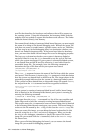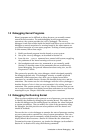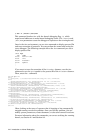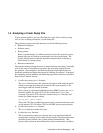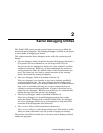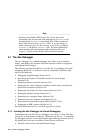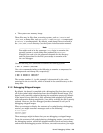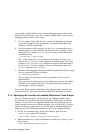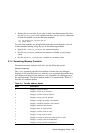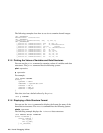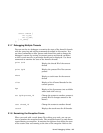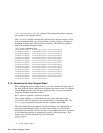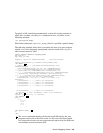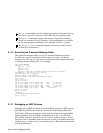want to add a symbol table to your current debugging session rather than
end the session and start a new one. To add a symbol table to your current
debugging session, follow these steps:
1. Go to a window other than the one in which the debugger is running,
or put the debugger in the background, and rebuild the modules for
which you need a symbol table.
2. Once the modules build correctly, use the
ostrip command to strip a
symbol table out of the resulting executable file. For example, if your
executable file is named kernel_program, issue a command such as
the following one:
% /usr/ucb/ostrip -t kernel_program
The -t flag causes the ostrip command to produce two files. One,
named kernel_program, is the stripped executable image. The other,
named kernel_program.stb, contains the symbol table information
for the kernel_program module. (For more information about the
ostrip command, see ostrip(1).)
3. Return to the debugging session and add the symbol table file by issuing
the dbx command stbadd as follows:
dbx> stbadd kernel_program.stb
You can specify an absolute or relative pathname on the stbadd
command line.
Once you issue this command, you can display the contents of symbols
included in the symbol table just as if you had built the module you
are debugging without stripping.
You can also delete symbol tables from a debugging session using the dbx
command stbdel. For more information about this command, see dbx(1).
2.1.3 Specifying the Location of Loadable Modules for Crash Dumps
When a crash dump occurs, the location of any loadable modules used
by the kernel is recorded in the crash dump file, enabling dbx to find the
modules. If the version of a loadable module that was running when the
crash occurred is moved to a different location, dbx will not find it. You can
specify the directory path where dbx should look for loadable modules by
using any one of the following methods (see dbx
(1) for complete details):
• On the dbx command line, specify the directory path with the
-module_path option. For example:
# dbx -k vmunix.1 vmzcore.1 -module_path /project4/mod_dir
• Before invoking dbx, set the environment variable DBX_MODULE_PATH.
For example:
# setenv DBX_MODULE_PATH /project4/mod_dir
2–4 Kernel Debugging Utilities



